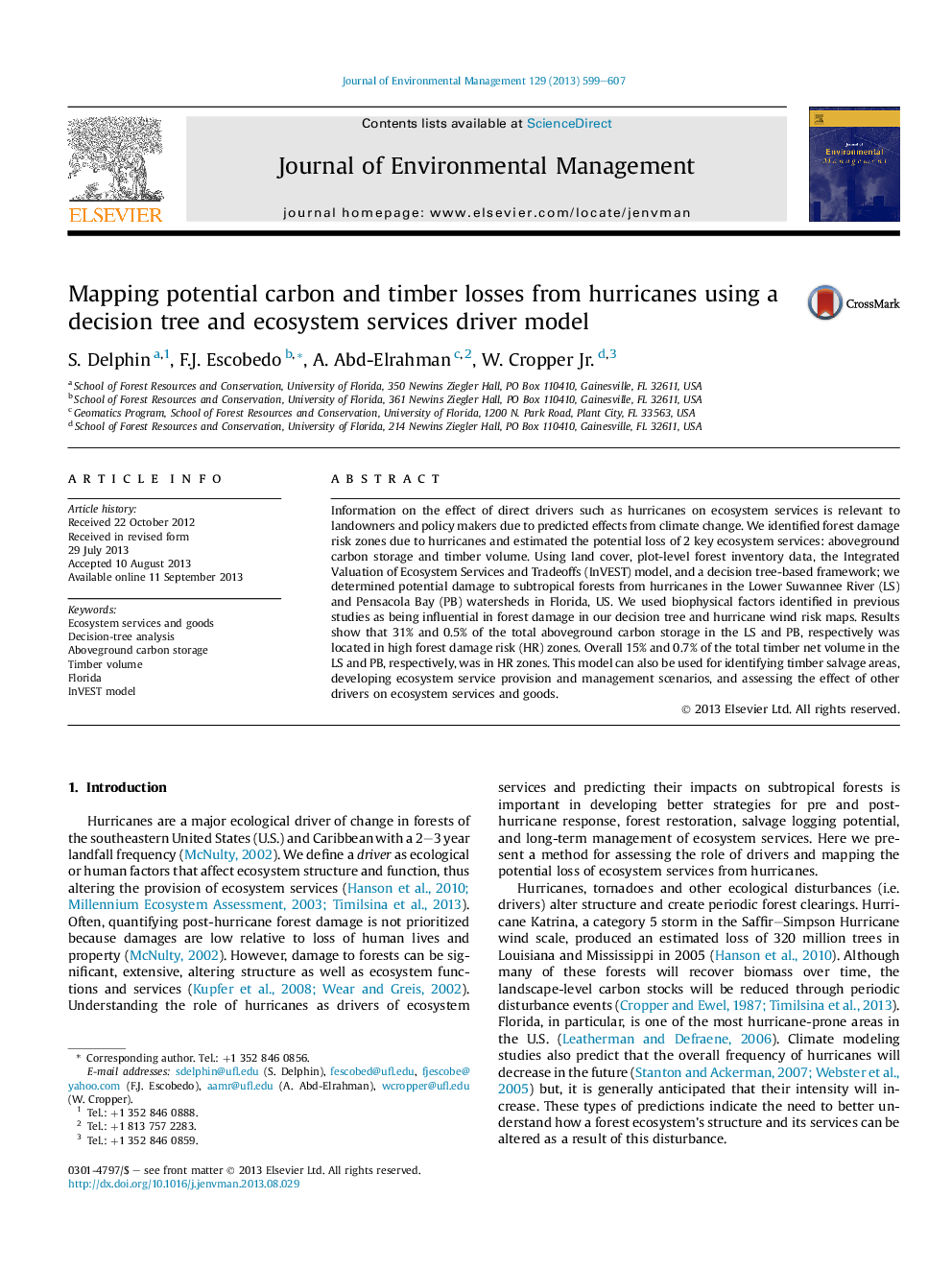| Article ID | Journal | Published Year | Pages | File Type |
|---|---|---|---|---|
| 1056205 | Journal of Environmental Management | 2013 | 9 Pages |
•A model was developed to quantify the effects of drivers on ecosystem services.•Available hurricane, forest, and tree-level data were used to model effects.•Potential forest carbon and timber losses were quantified using a decision-tree.•The framework identified and mapped hurricane-forest damage risks zones.•Approach can assess effects of disturbance and management on ecosystem services.
Information on the effect of direct drivers such as hurricanes on ecosystem services is relevant to landowners and policy makers due to predicted effects from climate change. We identified forest damage risk zones due to hurricanes and estimated the potential loss of 2 key ecosystem services: aboveground carbon storage and timber volume. Using land cover, plot-level forest inventory data, the Integrated Valuation of Ecosystem Services and Tradeoffs (InVEST) model, and a decision tree-based framework; we determined potential damage to subtropical forests from hurricanes in the Lower Suwannee River (LS) and Pensacola Bay (PB) watersheds in Florida, US. We used biophysical factors identified in previous studies as being influential in forest damage in our decision tree and hurricane wind risk maps. Results show that 31% and 0.5% of the total aboveground carbon storage in the LS and PB, respectively was located in high forest damage risk (HR) zones. Overall 15% and 0.7% of the total timber net volume in the LS and PB, respectively, was in HR zones. This model can also be used for identifying timber salvage areas, developing ecosystem service provision and management scenarios, and assessing the effect of other drivers on ecosystem services and goods.
